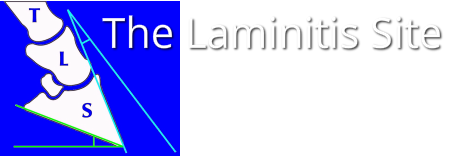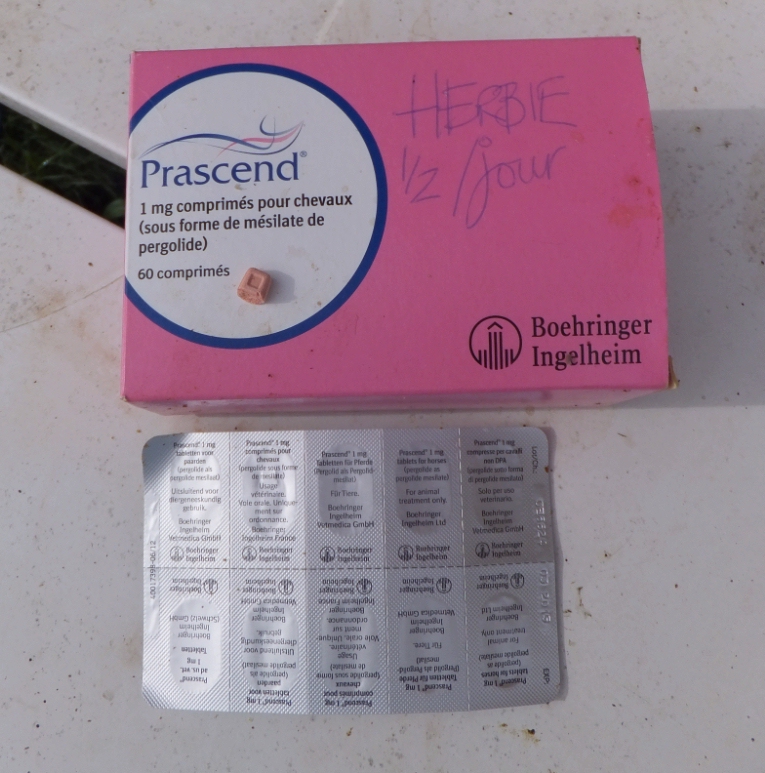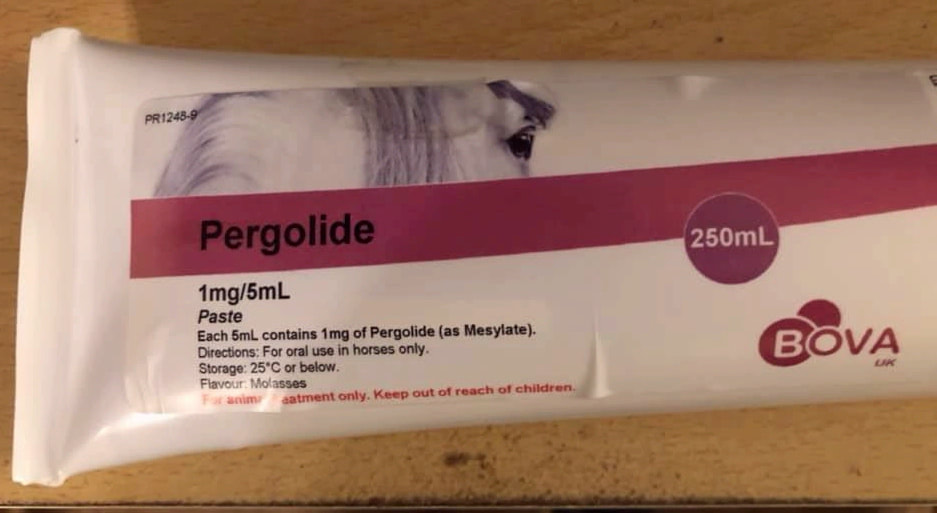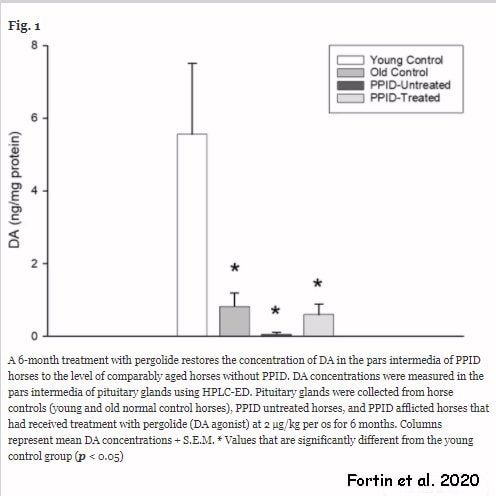1. reduces the clinical signs of PPID,
2. may slow progression of the disease,
3. may help protect against further neuron degeneration.
PPID currently cannot be cured, but can be treated with daily oral administration of a dopamine agonist, which acts in place of the dopamine that is under-produced by a horse with PPID, signalling the pars intermedia to reduce hormone production, and thereby reducing the clinical signs of PPID. It isn’t currently known whether treatment with pergolide will prevent or slow the hyperplasia and hypertrophy associated with the excess hormone production of the pars intermedia, but in theory this seems likely.
Pergolide is the dopamine agonist most commonly used and studied for treating horses with PPID. Pergolide is available as Prascend, as Bova pergolide paste, or as compounded pergolide, depending on your country.
In addition, research by Gille et al. (2002) found that pergolide protects dopamine-producing neurons under conditions of elevated oxidative stress, and Dr McFarlane has theorised that any antioxidant and neuroprotective properties of pergolide could be beneficial in slowing the progression of PPID, suggesting that early treatment with pergolide may be advisable
The initial dose of pergolide recommended is 0.002 mg/kg bodyweight once a day, so 1 mg for a 500 kg horse, but the dose may depend on the stage of the PPID, the season and other factors, and it should be titrated to the lowest effective dose for each individual horse based on response to therapy, whether that is improvement in clinical signs and blood results or signs of intolerance. Many horses require an increased dose during the seasonal rise, with a subsequent reduction in dose around Christmas.
Some horses go off their food or become depressed when starting treatment with pergolide, but when introduced gradually, ideally starting with 0.2-0.25 mg and slowly increasing to the recommended dose, side effects are minimised. Giving pergolide at different times to bucket feeds has helped some horses overcome inappetence.
The video below shows how to administer the Bova pergolide paste.
Fortin JS, Benskey MJ, Lookingland KJ, Petterson JS, Howey EB, Goudreau JL, Schott II HC
Restoring pars intermedia dopamine concentrations and tyrosine hydroxylase expression levels with pergolide: evidence from horses with pituitary pars intermedia dysfunction.
BMC Vet Res September 2020 16, 356. https://doi.org/10.1186/s12917-020-02565-3
Dopamine agonist, Equine, Parkinson disease animal model, Pituitary pars intermedia adenoma





 RSS Feed
RSS Feed